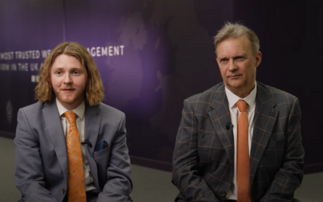Multi asset approaches are gaining ground but there are a lot to choose from. Fidelity's Multi Asset investment team set out two pointers to making the right selection
Investors have had an unsettling decade since the 2008 global financial crisis and the key uncertainties are far from resolved.
In particular, the GFC overturned many assumptions about asset price correlations and there may be similar surprises in store as central banks wind down quantitative easing.
The result is that established approaches to diversification, such as a simple portfolio splits between equity and fixed income, have lost authority. Many investors are broadening investments by developing a multi asset approach. A key attraction is that multi asset strategies can offer returns even in challenging market environments.
But multi asset strategies differ in terms of ambition, style, asset range, quality and global reach. Investors need to find the right approach as uncertainty over the economic cycle and fears of a bear market grow.
Two pointers to a strong multi asset approach
Two pointers can help. First, at Fidelity we know that multi asset strategies must take account of the full and growing range of investments across the world. That's not easy.
It takes deep resources to draw on the full range of global equity markets and a wide spectrum of fixed income including, for example, emerging market debt and loans. Strategy builders must also embrace a range of commodity, real estate and alternatives markets including infrastructure, asset leasing, and market neutral investment strategies.
Second, many investors can benefit from dynamic strategies that respond to shorter-term events. For example, geopolitical events, uncertainties in asset correlations, or a step change in the economic cycle.
In our fast-changing world, flexibility can be critical. At Fidelity, one of the focuses of our multi asset team is to identify tactical positions, e.g., on regions or currencies, that can create value whichever way the broader market moves.
That's particularly important at times like now when indicators such as the Fidelity Leading Indicator suggest world economies are at a crossroads, with suggestions of very weak but tentatively improving global growth*. In periods of prolonged economic uncertainty, investors may need shorter-term value opportunities across regions and the capital structure to deliver performance.
*While the Fidelity Leading Indicator is showing modest acceleration, caution is warranted as trade tensions have again resurfaced.











